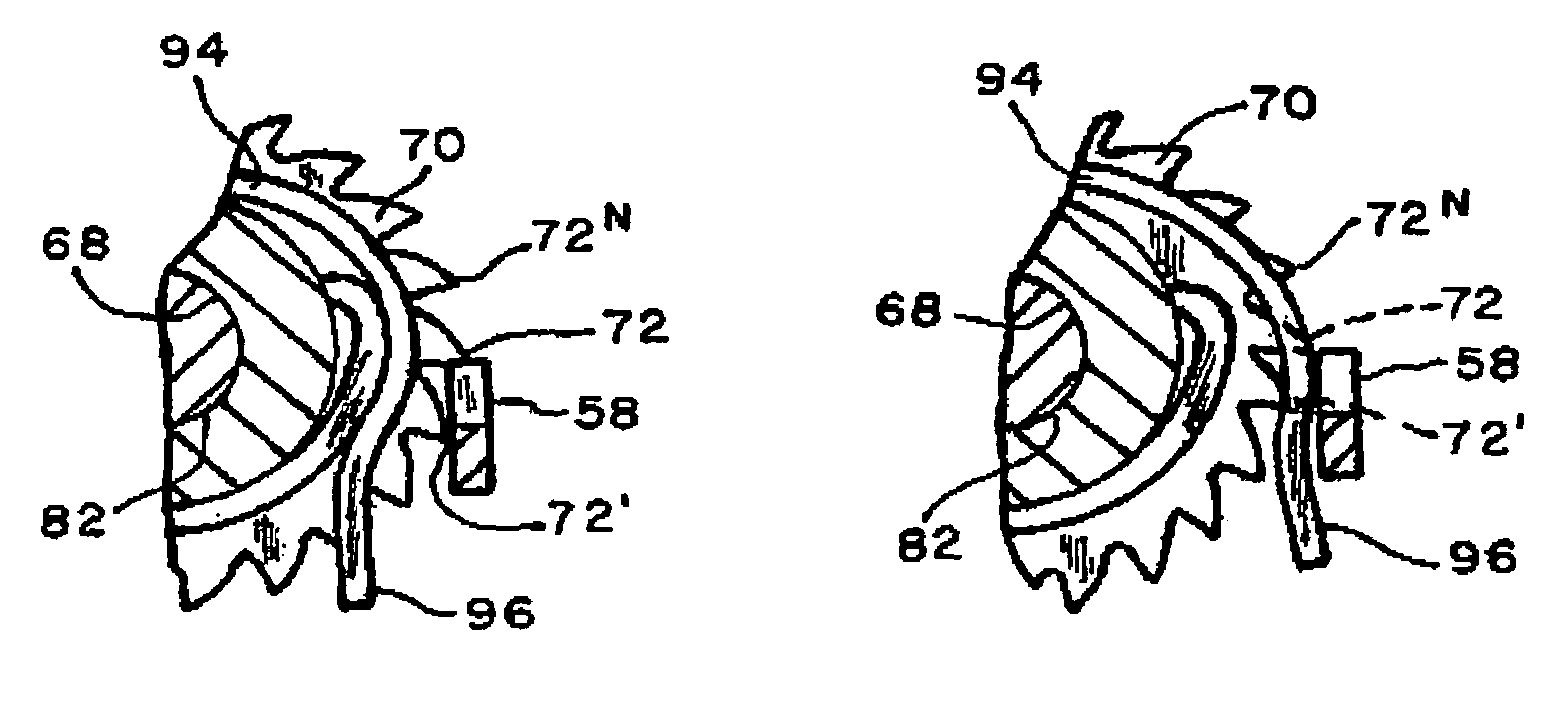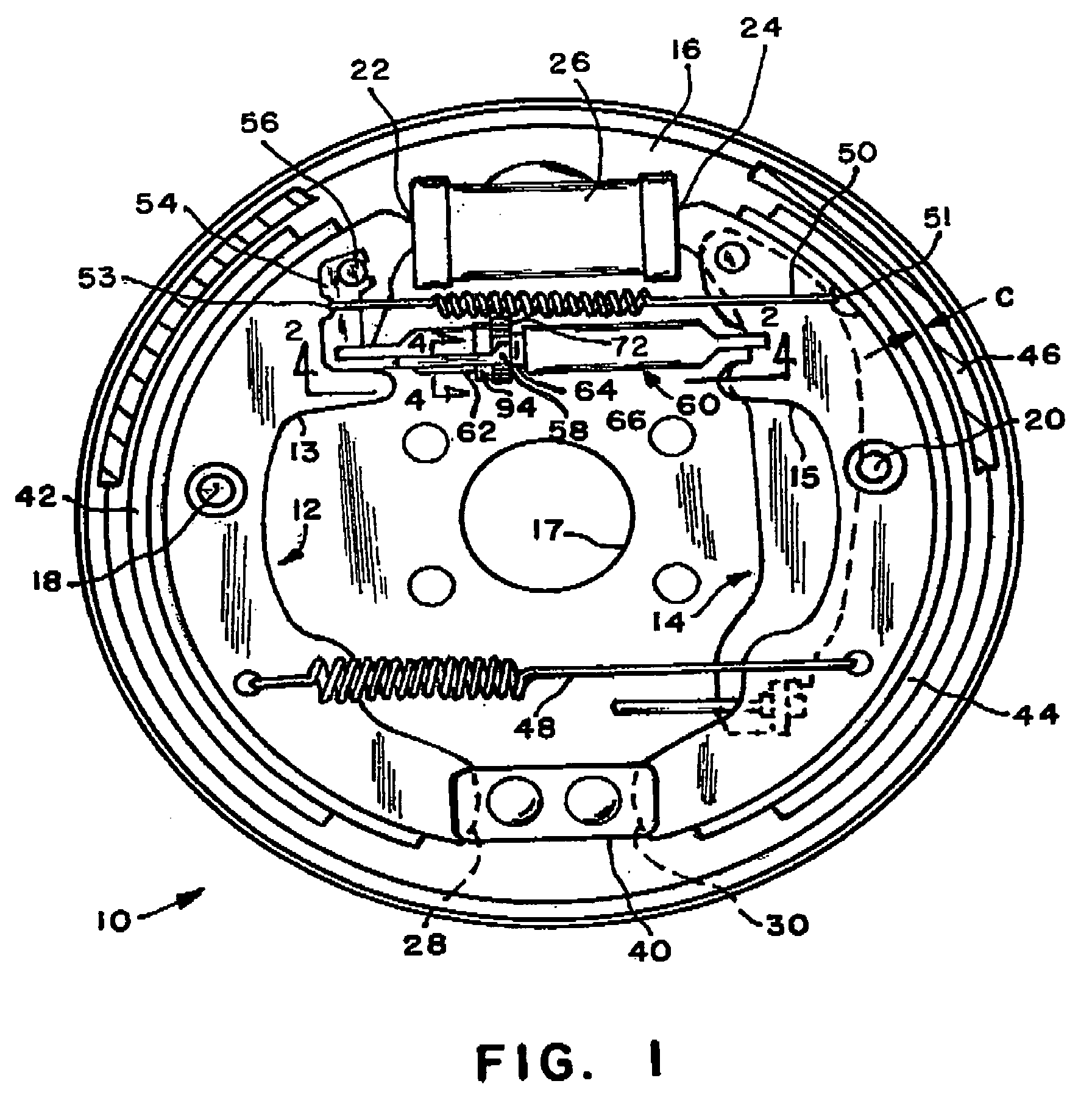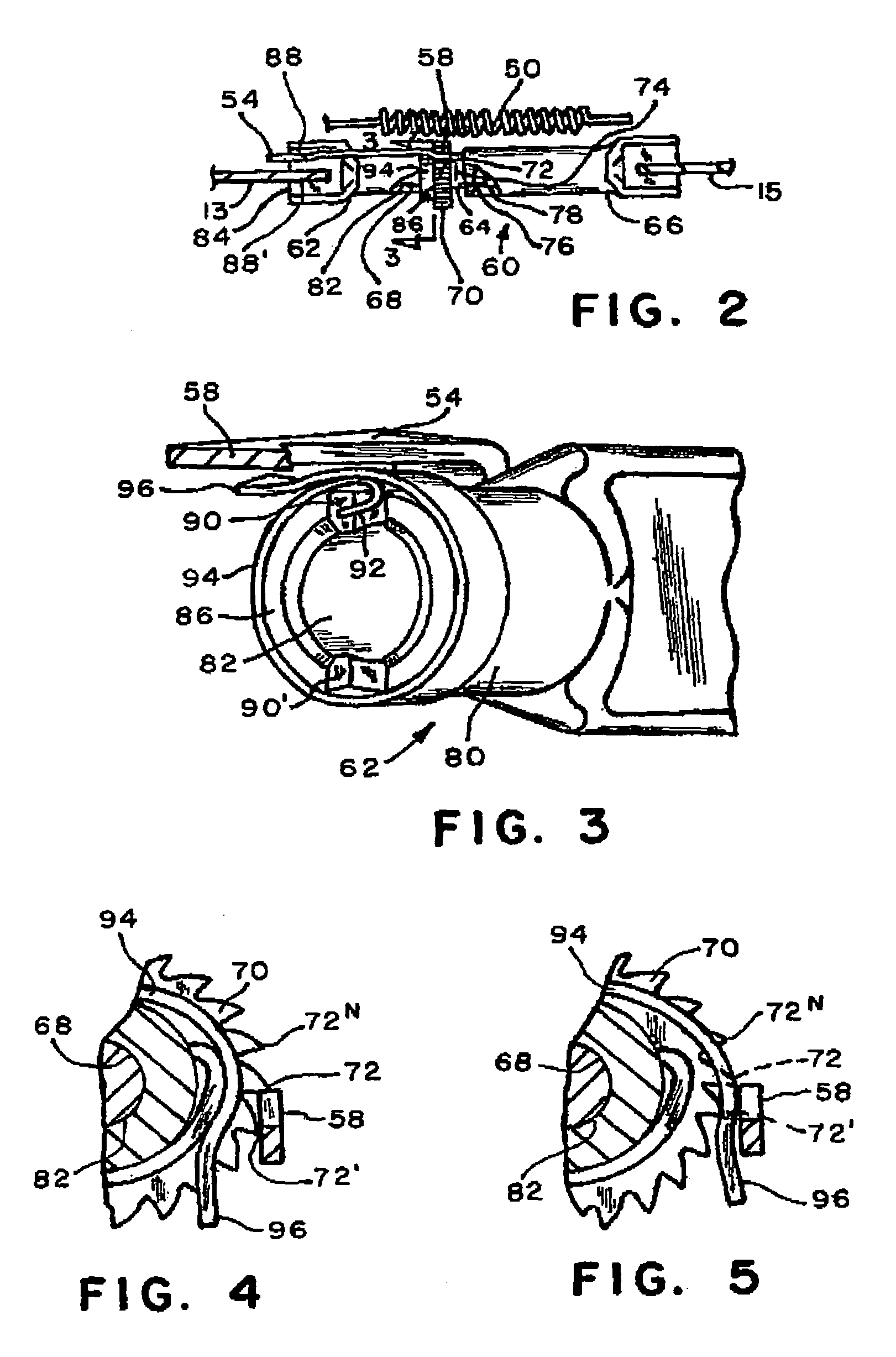Drum brake
a technology of drum brakes and struts, which is applied in the direction of brake types, slack adjusters, braking elements, etc., can solve the problems of dragging and inability to move, and the brake shoes in an extreme situation may actually remain, so as to increase the length of the extendible member, the effect of reducing the width of the strut, and reducing the slack
- Summary
- Abstract
- Description
- Claims
- Application Information
AI Technical Summary
Benefits of technology
Problems solved by technology
Method used
Image
Examples
Embodiment Construction
[0012]The drum brake 10 as shown in FIG. 1 includes a backing plate 16 with an opening17 for receiving an axle shaft of a vehicle. A hydraulic actuator assembly 26 is located at the top of the backing plate 16 and an anchor block 40 is aligned on the bottom of the backing plate 16. First 12 and second 14 brake shoes are retained on the backing plate 16 by first 18 and second 20 pins connected to a backing plate 16. Brake shoe 12 has a first end 22 and brake shoe 14 has a first end 24 that are respectively connected to a hydraulic actuator assembly 26. Further, brake shoe 12 has a second end 28 and brake shoes 14 has a second end 30 that are respectively connected to anchor block 40 attached to the backing plate 16. A strut 60 of a type illustrated in U.S. Pat. Nos. 4,223,765 and 4,502,574 is located between the webs 13 and 15 of brake shoes 12 and 14 respectively, to maintain a predetermined running clearance “C” between first 42 and second 44 friction pads and a drum 46. A first sp...
PUM
 Login to View More
Login to View More Abstract
Description
Claims
Application Information
 Login to View More
Login to View More - R&D
- Intellectual Property
- Life Sciences
- Materials
- Tech Scout
- Unparalleled Data Quality
- Higher Quality Content
- 60% Fewer Hallucinations
Browse by: Latest US Patents, China's latest patents, Technical Efficacy Thesaurus, Application Domain, Technology Topic, Popular Technical Reports.
© 2025 PatSnap. All rights reserved.Legal|Privacy policy|Modern Slavery Act Transparency Statement|Sitemap|About US| Contact US: help@patsnap.com



